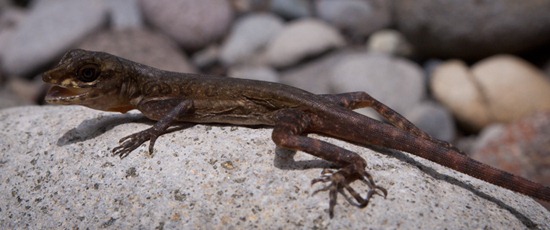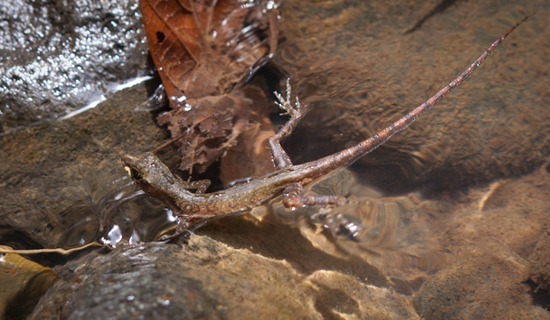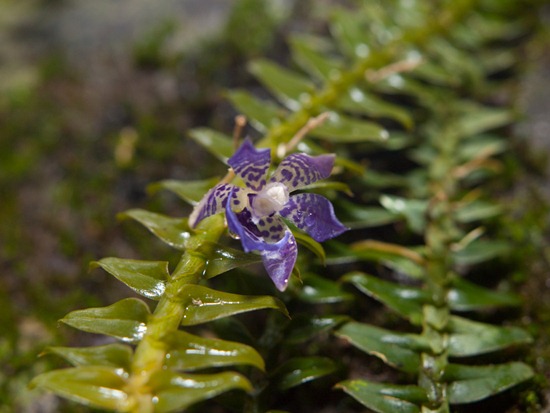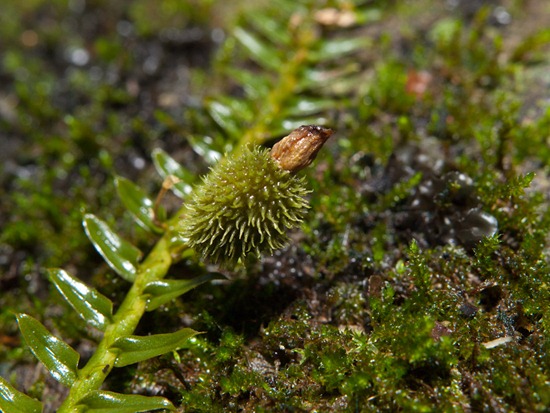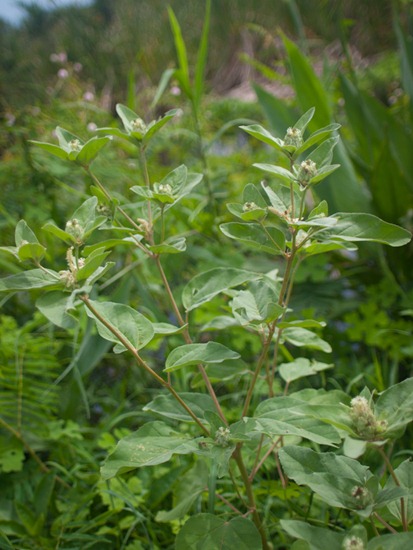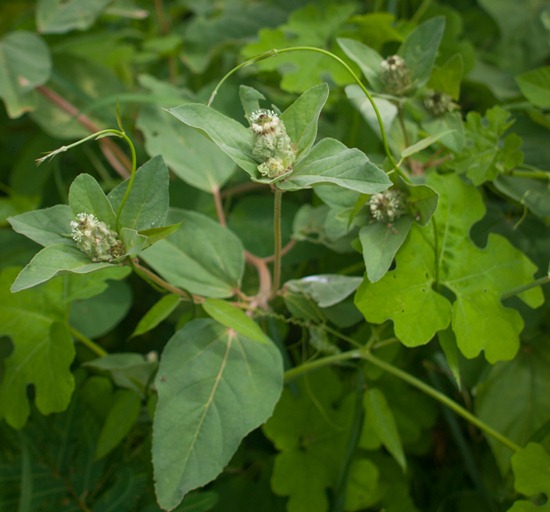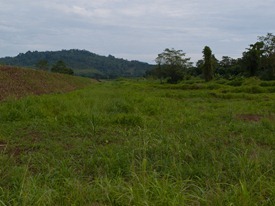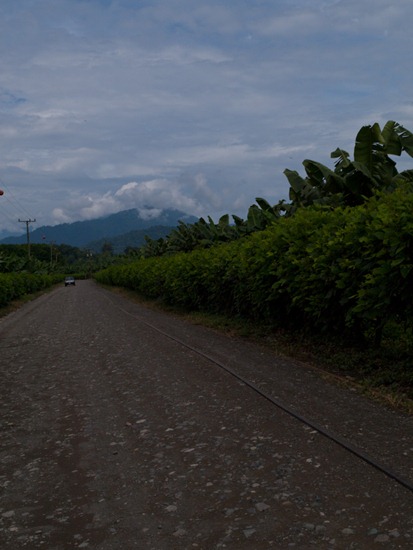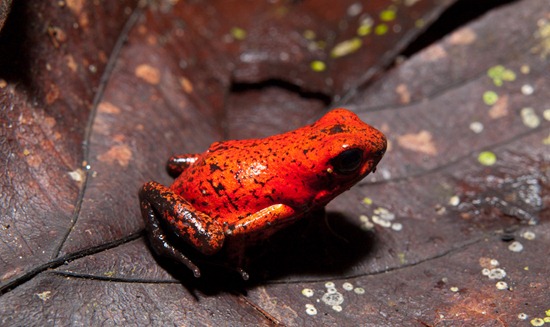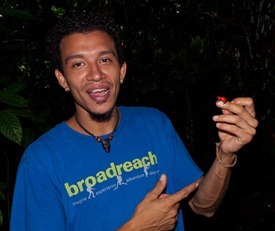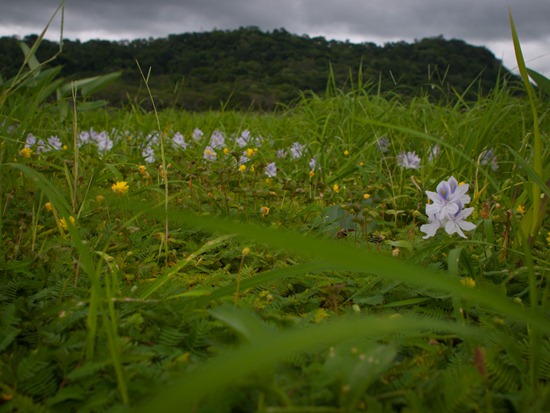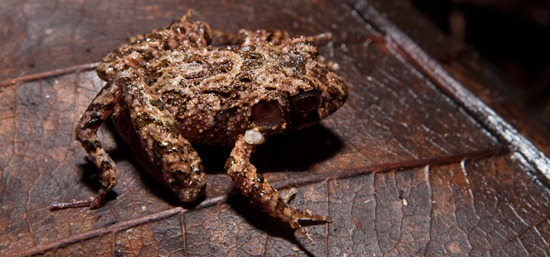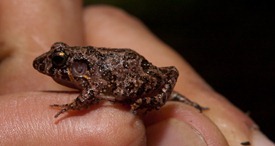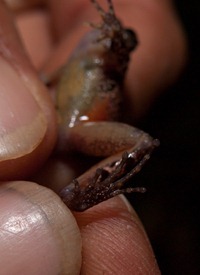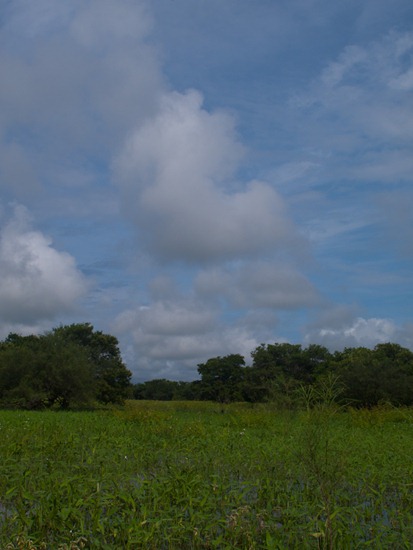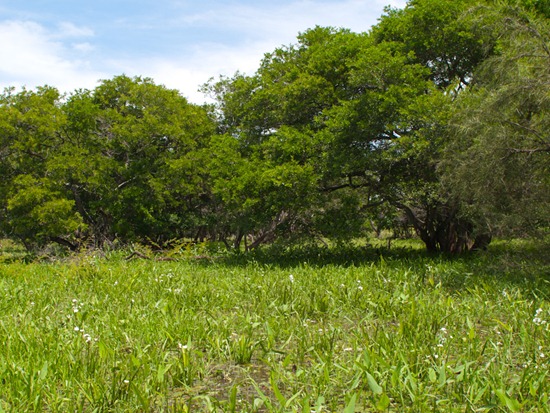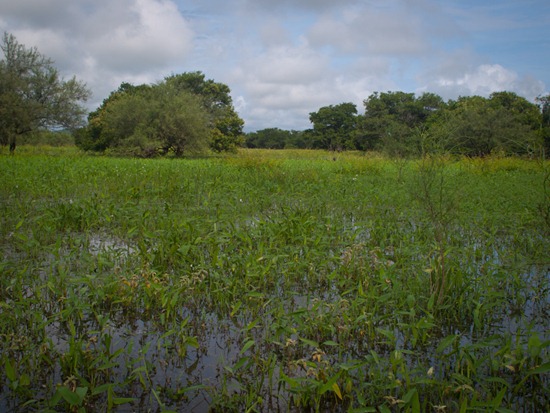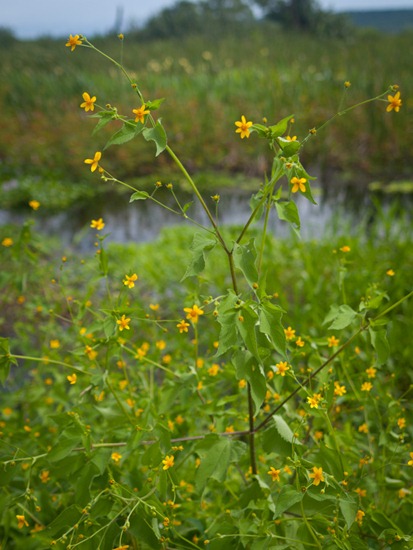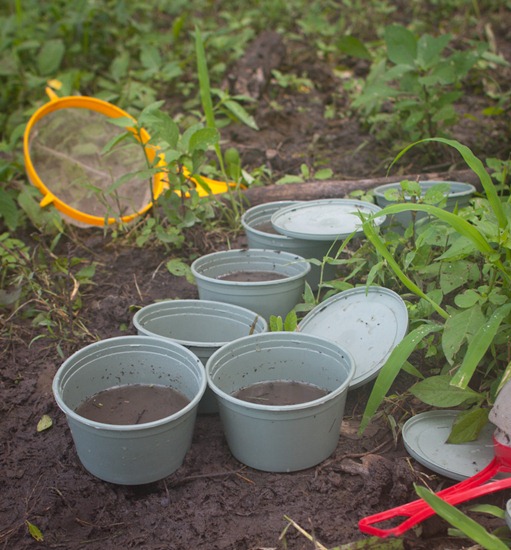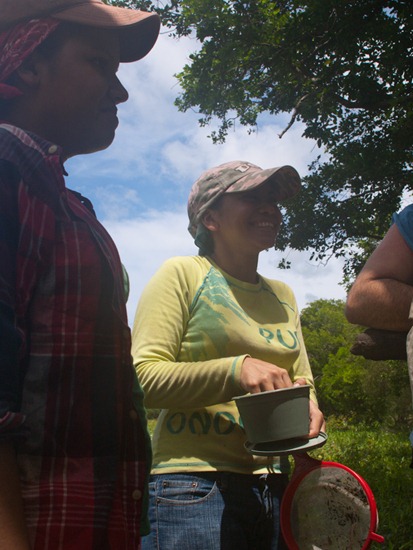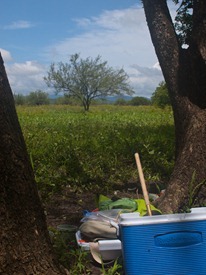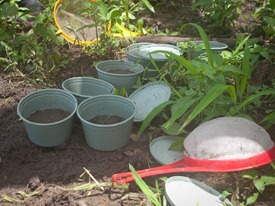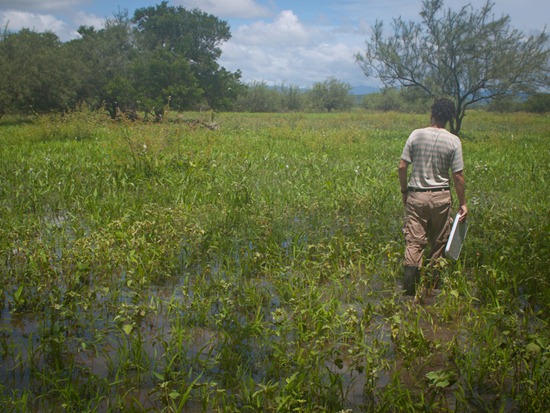This stream anole is frequently encountered in Reserva Biológica Alberto Manuel Brenes, and Boa and I found it at Hitoy Cerere.
Monthly Archives: October 2010
Micro Orchid
Croton argenteus
Croton argenteus confused me for a while. I had encountered the species in and around the Palo Verde wetland as a small, emergent plant, and had assumed it was annual or at least without above ground tissue across years because it was not present in the beginning of the season and it was flowering soon after emerging. As such, I could not find it in the keys….
Then, while driving to Reserva Biologica Lomas de Barbudal to help Ramsa (a PhD student studying watershed land-use effects on insect communities in and around dry-forest streams), I spotted a large shrub that looked surprisingly similar to my yet unidentified wetland plant. When I returned and picked up the shrub and tree book – bingo.
I suspect that cattle grazing knocks back this species from growing to a shrub-like state, since there is frequently evidence of herbivory on the small plants I encountered.
Ride out the Hitoy Cerere
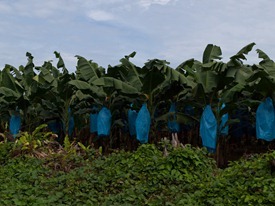 |
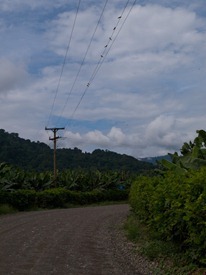 |
Oophaga pumillio and Boa
Eichhornia flowers poking through
Craugastor polyptychus
Using Savage’s (2004) key and photographs, my best guess for this little herp is Craugastor polyptychus. The former Eleutherodactylus group is exceptionally diversity and difficult to key… especially when the specimen in question was caught 2500 miles away a month ago and not retained, but merely photographed. Whatever it is, I’m sure it’s new for me, which makes my lack of a confident identification that much more frustrating.
Lazaro Wetland
Baltimora recta
Tadpole Collection
In June, Mahmood recruited his assistants to help me collect tadpoles. We collected several hundred of about three species, most of which were Leptodactylus spp. Both Arellys and Gabi, pictured below, seemed happy to be out of the lab and in an area not completely saturated with mosquitoes. In the last photo, Rubén walks into the wetland to collect some invertebrate samples for his own work. This area is also pictured here three months later.

